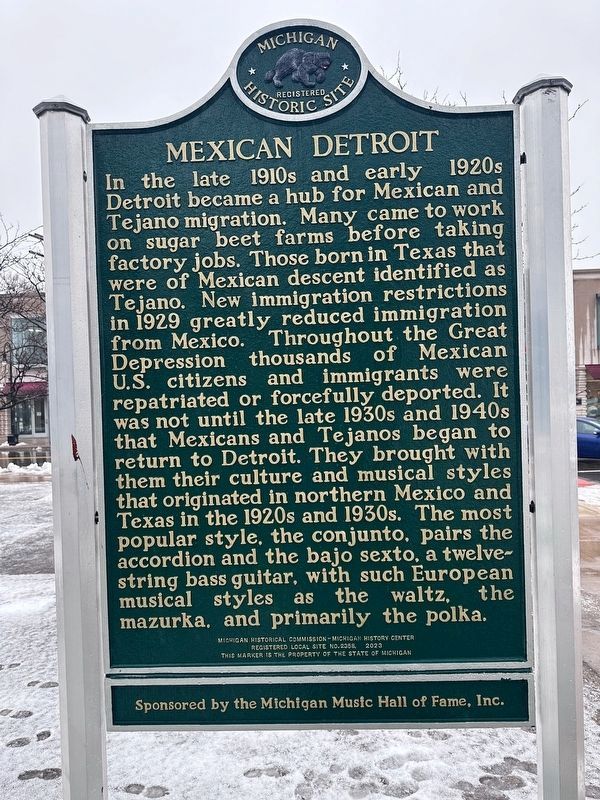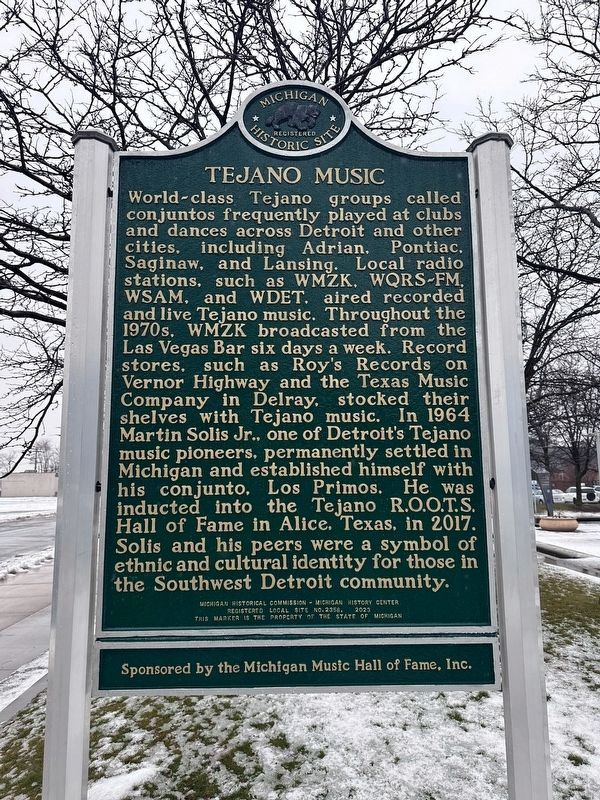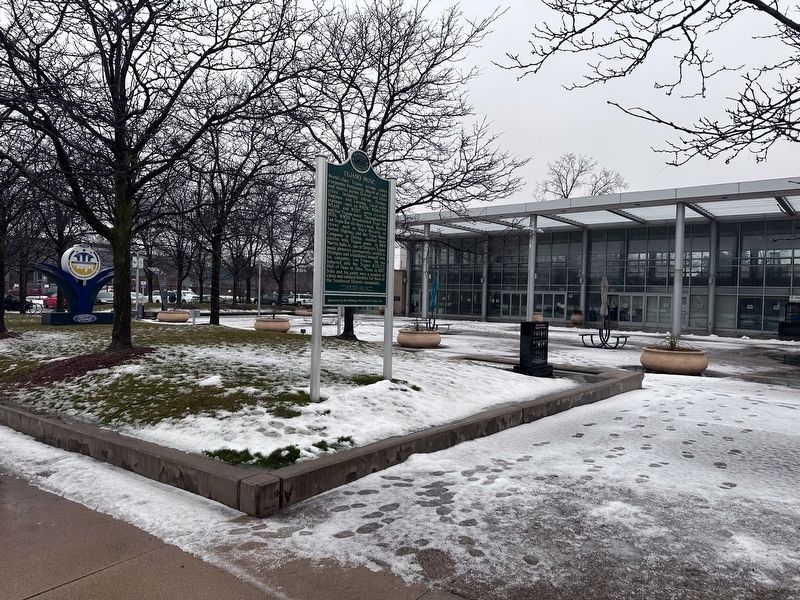Central Southwest in Detroit in Wayne County, Michigan — The American Midwest (Great Lakes)
Mexican Detroit / Tejano Music
Mexican Detroit
In the late 1910s and early 1920s Detroit became a hub for Mexican and Tejano migration. Many came to work on sugar beet farms before taking factory jobs. Those born in Texas that were of Mexican descent identified as Tejano. New immigration restrictions in 1929 greatly reduced immigration from Mexico. Throughout the Great Depression thousands of Mexican U.S. citizens and immigrants were repatriated or forcefully deported. It was not until the late 1930s and 1940s that Mexicans and Tejanos began to return to Detroit. They brought with them their culture and musical styles that originated in northern Mexico and Texas in the 1920s and 1930s. The most popular style, the conjunto, pairs the accordion and the bajo sexto, a twelve-string bass guitar, with such European musical styles as the waltz, the mazurka, and primarily the polka.
Tejano Music
World-class Tejano groups called conjuntos frequently played at clubs and dances across Detroit and other cities, including Adrian, Pontiac, Saginaw, and Lansing. Local radio stations, such as WMZK, WQRS-FM, WSAM, and WDET, aired recorded and live Tejano music. Throughout the 1970s, WMZK broadcasted from the Las Vegas Bar six days a week. Record stores, such as Roy's Records on Vernor Highway and the Texas Music Company in Delray, stocked their shelves with Tejano music. In 1964 Martin Solis Jr., one of Detroit's Tejano music pioneers, permanently settled in Michigan and established himself with his conjunto, Los Primos. He was inducted into the Tejano R.O.O.T.S. Hall of Fame in Alice, Texas, in 2017. Solis and his peers were a symbol of ethnic and cultural identity for those in the Southwest Detroit community.
Erected 2023 by Michigan Historical Commission and Michigan History Center. (Marker Number L2358.)
Topics and series. This historical marker is listed in these topic lists: Arts, Letters, Music • Immigration • Settlements & Settlers. In addition, it is included in the Michigan Historical Commission series list. A significant historical year for this entry is 1929.
Location. 42° 19.475′ N, 83° 4.878′ W. Marker is in Detroit, Michigan, in Wayne County. It is in Central Southwest. Marker is at the intersection of Bagley Street and 21st Street, on the right when traveling west on Bagley Street. Touch for map. Marker is at or near this postal address: 2826 Bagley Street, Detroit MI 48216, United States of America. Touch for directions.
Other nearby markers. At least 8 other markers are within 3 kilometers of this marker, measured as the crow flies. Ste. Anne Church / Gabriel Richard (approx. 0.3 miles away); Gabriel Richard (approx. 0.3 miles away); Joseph H. Esterling House (approx. half a mile away); Martin Kundig (approx. 0.8 miles away); Montreal Point in 1782 (approx. 1.1 miles away in Canada); Detroit Copper & Brass (approx. 1.8 kilometers away); 1748 (approx. 1.9 kilometers away in Canada); Jesuit Mission to the Hurons (approx. 1.9 kilometers away in Canada). Touch for a list and map of all markers in Detroit.
Credits. This page was last revised on January 25, 2024. It was originally submitted on January 24, 2024, by J.T. Lambrou of New Boston, Michigan. This page has been viewed 57 times since then. Photos: 1, 2, 3. submitted on January 24, 2024, by J.T. Lambrou of New Boston, Michigan. • J. Makali Bruton was the editor who published this page.


